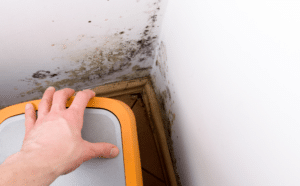 Winter is a prime time for mould growth due to the increased moisture levels and reduced ventilation in homes and offices. Mould can pose serious health risks, including respiratory issues, allergies, and skin irritation. Additionally, mould can cause significant damage to your property if left unchecked. To prevent and manage mould growth during the winter months, follow these essential tips.
Winter is a prime time for mould growth due to the increased moisture levels and reduced ventilation in homes and offices. Mould can pose serious health risks, including respiratory issues, allergies, and skin irritation. Additionally, mould can cause significant damage to your property if left unchecked. To prevent and manage mould growth during the winter months, follow these essential tips.
1. Control Indoor Humidity
One of the key factors that contribute to mould growth is high indoor humidity. During winter, indoor humidity levels can rise due to activities such as cooking, showering, and using humidifiers. To keep humidity levels in check, use a hygrometer to monitor indoor humidity and aim to keep it below 60%. Ideally, indoor humidity should be between 30% and 50%.
Use dehumidifiers in areas prone to high humidity, such as basements, bathrooms, and laundry rooms. Additionally, ensure proper ventilation by using exhaust fans in kitchens and bathrooms, and opening windows periodically to allow fresh air to circulate.
2. Fix Leaks and Water Damage Promptly
Water leaks and water damage can create ideal conditions for mould growth. Inspect your home regularly for signs of leaks, such as water stains, damp spots, or peeling paint. Pay particular attention to areas around windows, doors, roofs, and plumbing fixtures.
If you find any leaks or water damage, address them promptly. Repair or replace damaged roofing, windows, and plumbing fixtures, and thoroughly dry any affected areas. Use fans and dehumidifiers to speed up the drying process and prevent mould from taking hold.
3. Improve Ventilation
Proper ventilation is crucial for preventing mould growth, especially in areas prone to moisture buildup. Ensure that your home has adequate ventilation by using exhaust fans, opening windows, and maintaining your HVAC system.
In addition to using exhaust fans in kitchens and bathrooms, consider installing a whole-house ventilation system to improve air circulation throughout your home. This can help reduce indoor humidity levels and prevent mould growth.
4. Keep Your Home Clean and Dry
Regular cleaning and maintenance can help prevent mould growth by removing potential food sources and reducing moisture levels. Clean and dry surfaces promptly after spills or water exposure, and use mould-resistant cleaning products in areas prone to mould, such as bathrooms and kitchens.
Regularly clean and vacuum carpets, rugs, and upholstery to remove dust and dirt that can contribute to mould growth. Use a HEPA vacuum cleaner to capture mould spores and prevent them from spreading.
5. Use Mould-Resistant Products
When renovating or building, consider using mould-resistant products to reduce the risk of mould growth. Mould-resistant drywall, paint, and insulation can help create a less hospitable environment for mould.
In areas prone to moisture, such as bathrooms, kitchens, and basements, use mould-resistant materials and finishes. This can help prevent mould from taking hold and make it easier to clean and maintain these areas.
Preventing mould growth during the winter months requires a proactive approach to controlling indoor humidity, fixing leaks, improving ventilation, and maintaining a clean and dry living environment. By following these tips, you can reduce the risk of mould growth and protect your health and property. For professional mould remediation services and expert advice, consider reaching out to Pure Services. Our experienced team can help you identify and address mould issues, ensuring a safe and healthy living environment.
